Abstract
Seven State health departments, those in Illinois, Nebraska, New Jersey, New York, North Carolina, Texas, and Wisconsin, have participated in an effort to utilize a variety of State-specific cancer-related data to describe the cancer burden in their State's population. The data were then used to develop a statewide cancer plan or supplement an existing plan to address the defined problems. Cancer data have not been well utilized in the planning of intervention programs in the past, and the efforts in these States can serve as models for data use in programs to prevent and control cancer and other chronic diseases. State-specific data can be used to rank needs and make a clear case that can influence decision makers regarding resource allocation. The purpose of this report is to describe the data sources and additional statistics that were used to provide a broad picture of the cancer burden that will aid in targeting and defining intervention needs. Mortality, incidence, risk factor prevalence, and hospital discharge data appear to be the most accessible and potentially useful of the data sources examined, whereas insurance claims data, sources of treatment data, and environmental data bases were less useful in planning intervention strategies.
Full text
PDF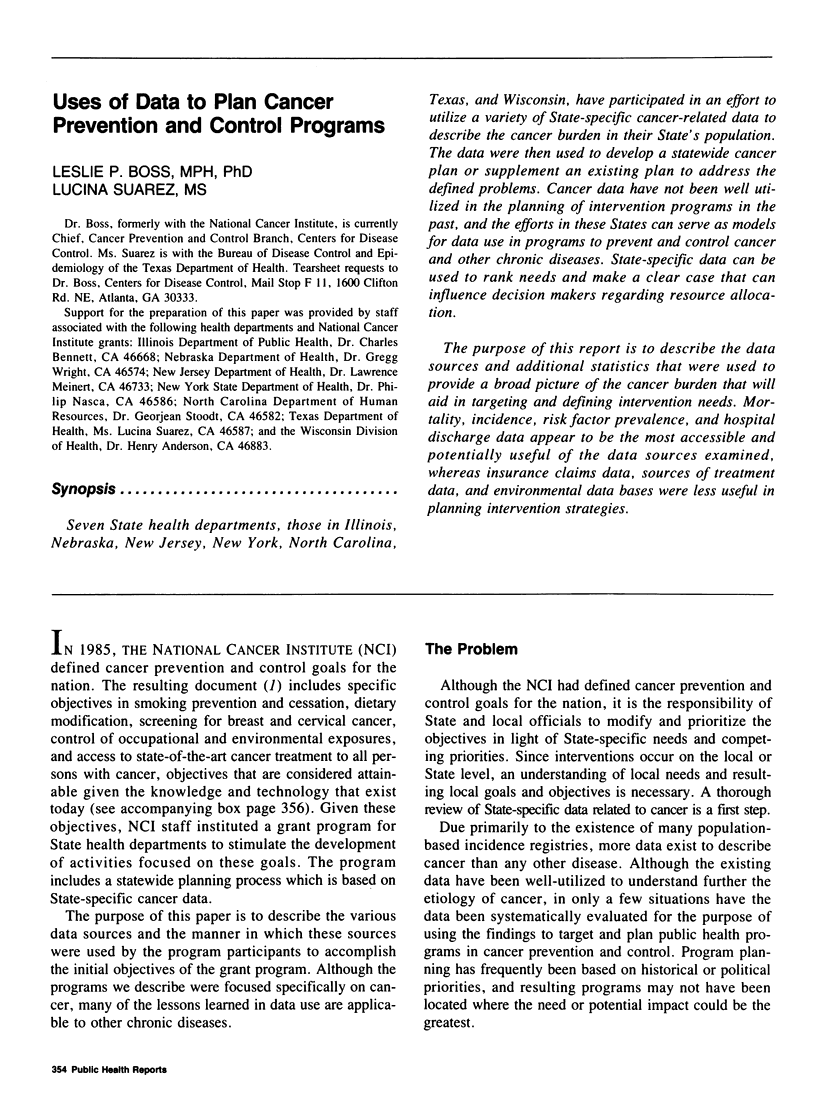
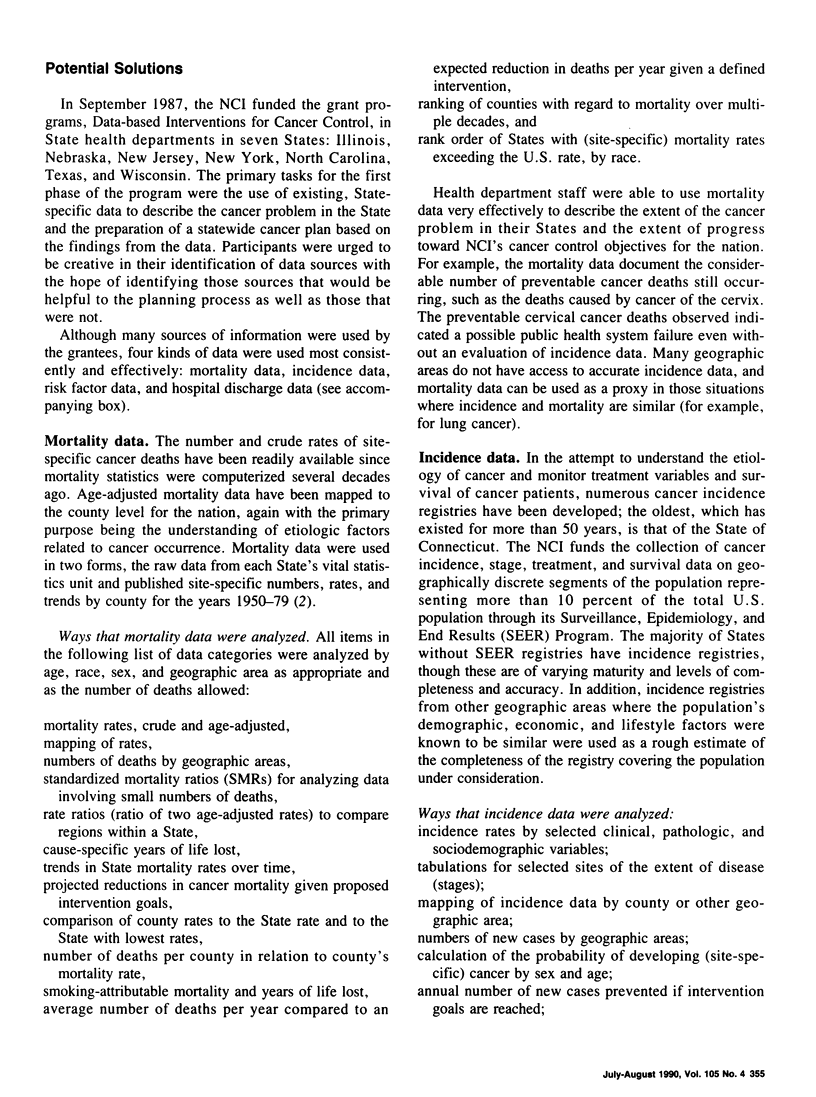
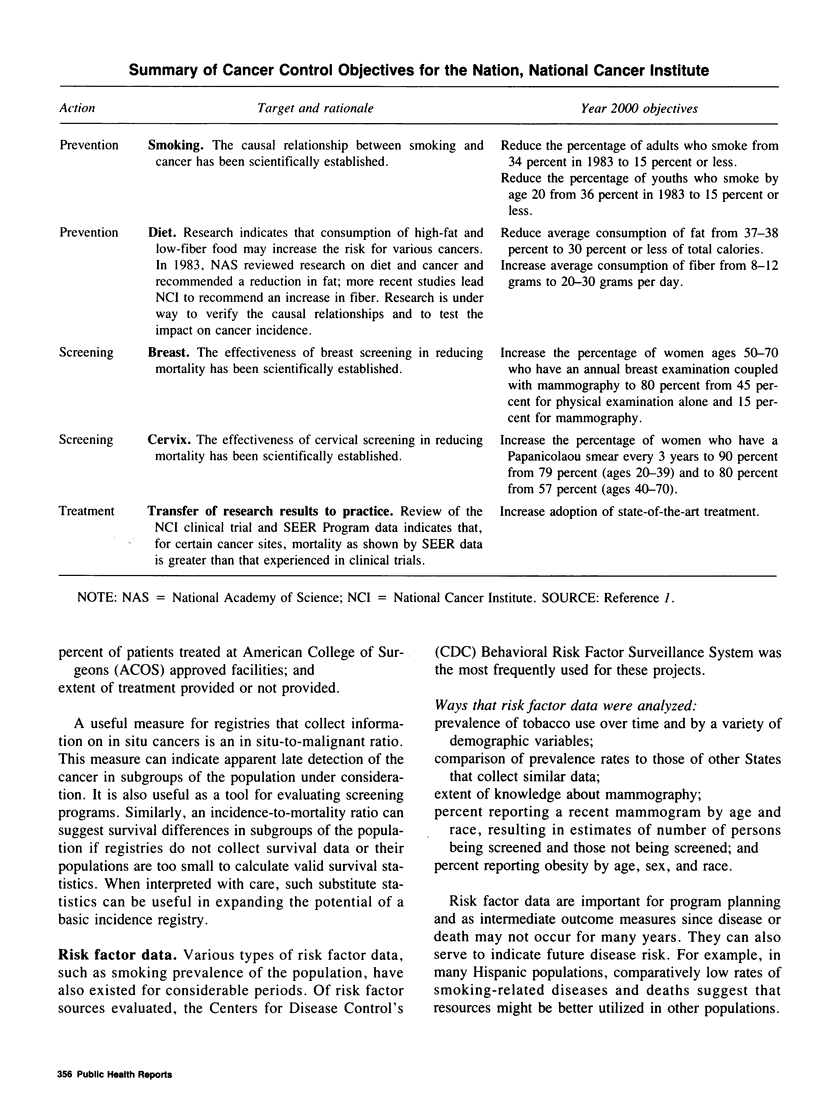

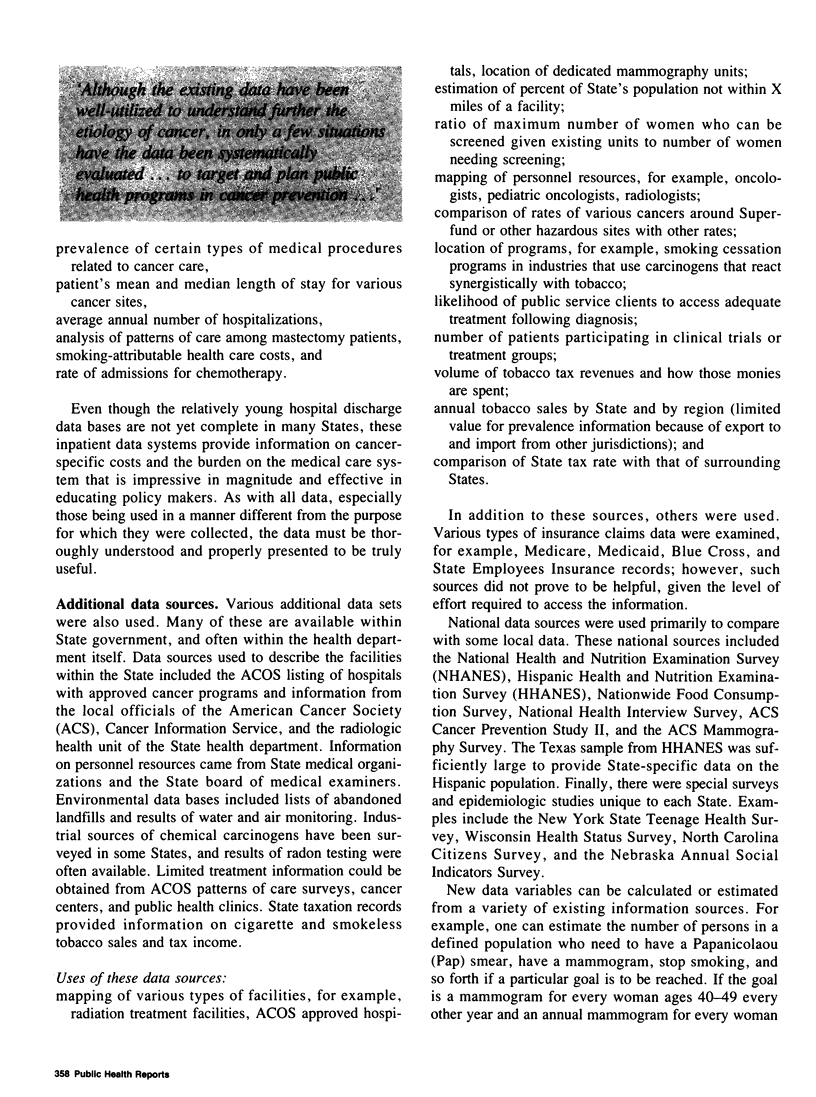
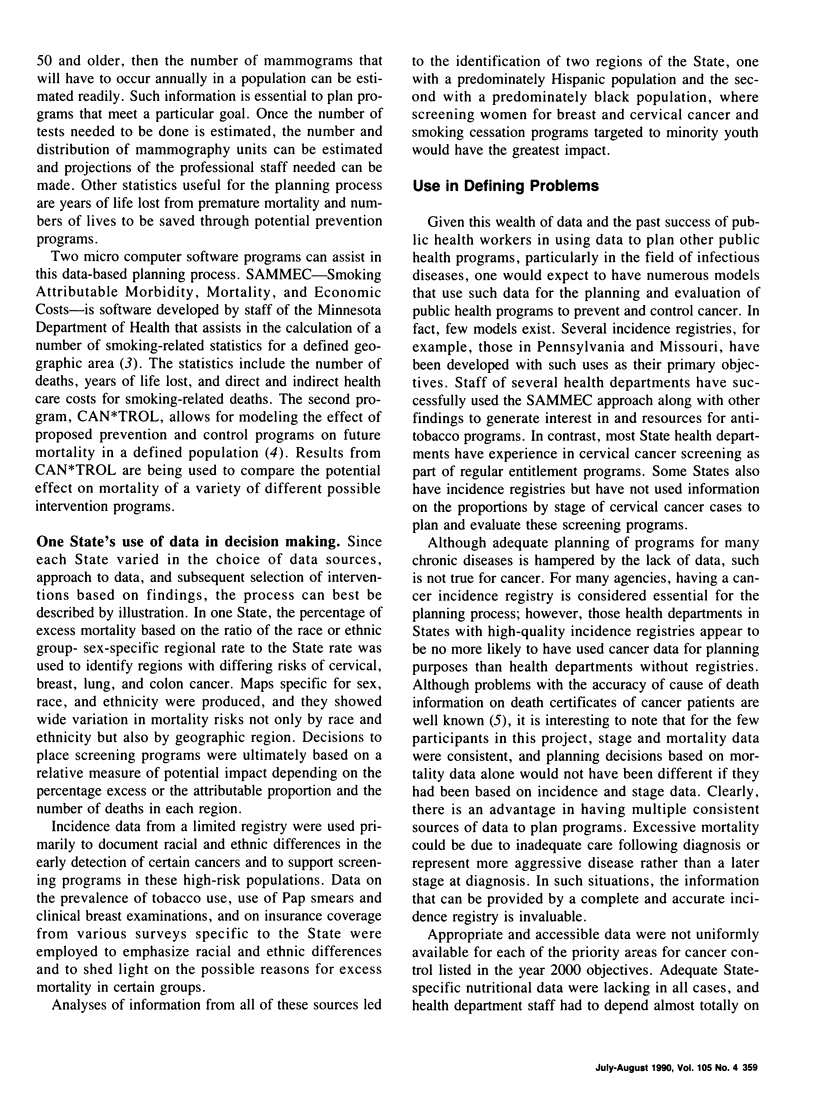
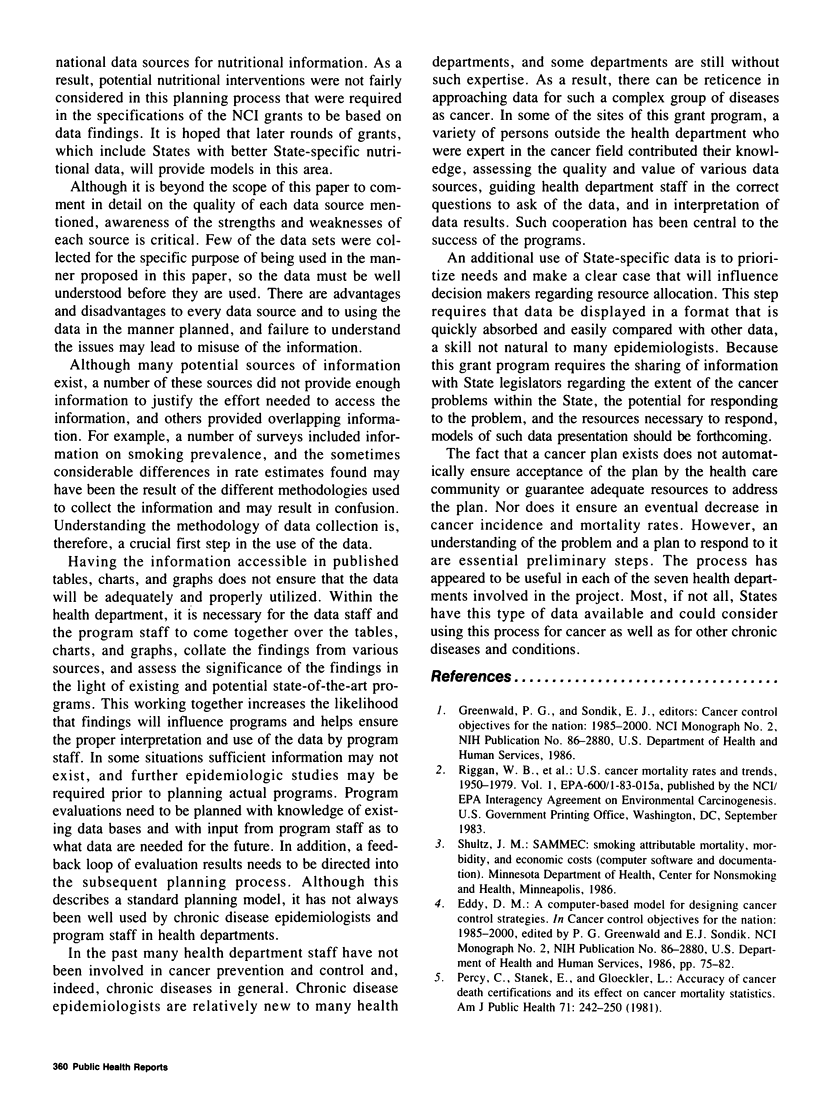
Selected References
These references are in PubMed. This may not be the complete list of references from this article.
- Percy C., Stanek E., 3rd, Gloeckler L. Accuracy of cancer death certificates and its effect on cancer mortality statistics. Am J Public Health. 1981 Mar;71(3):242–250. doi: 10.2105/ajph.71.3.242. [DOI] [PMC free article] [PubMed] [Google Scholar]


